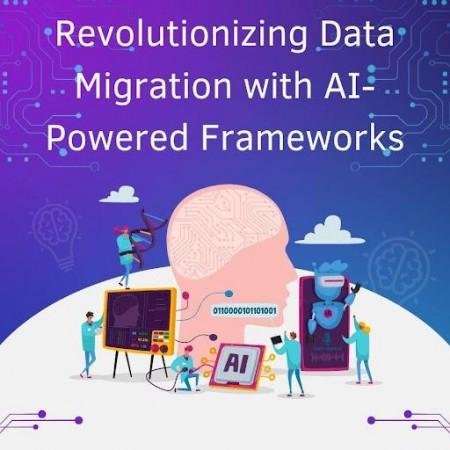
In today's fast-paced technological landscape, the evolution of database migration has become essential for organizations striving to modernize their digital infrastructure. Traditional migration techniques, burdened by manual interventions and static rule-based approaches, have long struggled with inefficiencies, errors, and escalating costs. However, the rise of AI-powered frameworks is transforming this landscape, bringing automation, accuracy, and scalability to the forefront of data migration. This article explores how artificial intelligence redefines database migration, highlighting innovations in schema conversion, predictive optimization, and error detection. Ellavarasan Asokan, a leading researcher in this field, extensively discusses this technological revolution and explores the advantages and challenges of AI-driven migration solutions.
The Shift from Manual to AI-Driven Migrations
For decades, database migration required extensive manual oversight, from schema conversion to data transformation and validation. Human errors, prolonged timelines, and post-migration performance issues were common, often leading to costly project overruns. AI-driven frameworks, however, are introducing a paradigm shift. By leveraging machine learning algorithms, these systems can analyze relationships between data entities, predict migration pitfalls, and suggest optimal transformation strategies. This automation reduces human intervention, making migration more efficient and cost-effective.
AI-Powered Schema Conversion
One of the most complex aspects of migration is schema conversion, where databases with different structures must be aligned for seamless data transfer. AI-driven tools excel in this area by using deep learning models that automatically map data structures accurately. These systems can recognize patterns and similarities between database schemas, even when naming conventions and formats differ. This intelligent automation reduces schema mapping errors and speeds up the overall migration process, allowing enterprises to transition to modern data platforms with minimal disruption.
Predictive Performance Optimization
Unlike traditional migrations, which often address performance issues reactively, AI-driven frameworks use predictive analytics to optimize database performance before the migration even begins. Machine learning models analyze historical data workloads, anticipate potential bottlenecks, and recommend indexing and partitioning strategies that enhance efficiency. Studies have shown that AI-powered optimization can reduce post-migration performance tuning efforts by nearly 60%, significantly improving deployment timelines and reducing downtime.
Automated Error Detection and Correction
Maintaining data integrity is a major challenge in database migration. AI-based frameworks offer superior error detection capabilities by leveraging anomaly detection models that identify inconsistencies, missing values, and formatting errors. These systems use predictive models to correct certain data issues automatically, ensuring a higher degree of accuracy. By minimizing the risk of data corruption, AI-driven tools enhance the reliability of migrated databases, ensuring that businesses can seamlessly continue their operations post-migration.
Challenges in Implementing AI-Driven Migrations
Despite their advantages, AI-powered migration frameworks face implementation challenges. Their effectiveness relies heavily on high-quality training data, and many organizations lack the necessary historical migration datasets to train robust AI models. Additionally, interpretability remains a concern, as AI models often operate as "black boxes," making it difficult for database administrators to validate decisions. Addressing these challenges requires investment in structured documentation, ongoing training for technical teams, and developing transparent AI decision-making processes.
Future Prospects of AI in Database Migration
AI-driven database migration is advancing with self-learning models and DevOps integration. Continuous learning enhances accuracy, while federated learning enables secure, collaborative training. These innovations streamline migration, making AI solutions more efficient and accessible for enterprises, reducing complexity and improving adaptability over time.
In conclusion, Ellavarasan Asokan highlights how AI-driven frameworks revolutionize database migration by enhancing automation, improving performance, and reducing errors. As these technologies continue to evolve, organizations that adopt structured AI-driven migration strategies will benefit from reduced risk, lower costs, and faster modernization of their data infrastructure. With continuous advancements in AI, database migration is set to become a more streamlined, intelligent, and efficient process in the years to come.

















